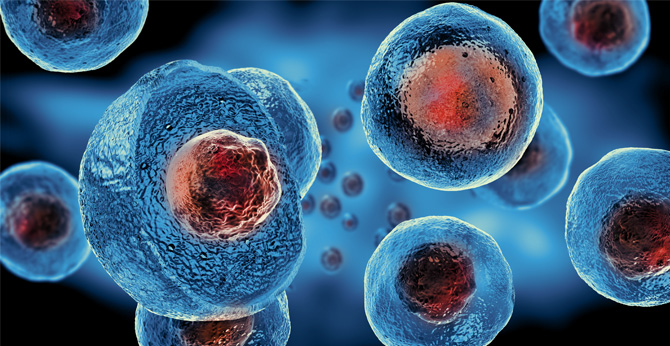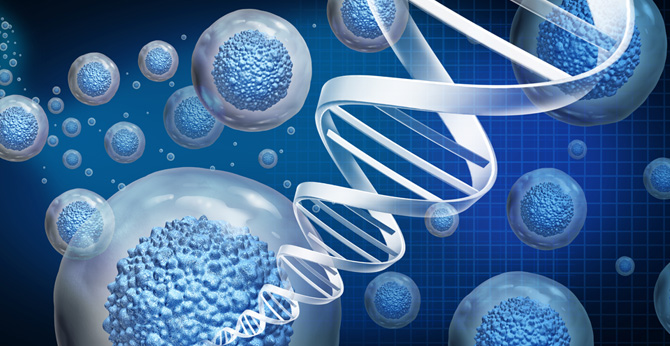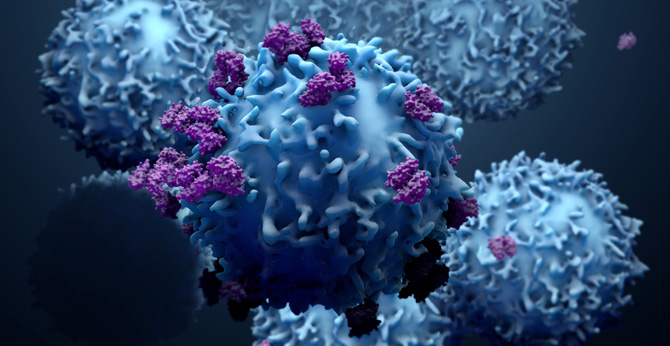All products and services are For Research Use Only and CANNOT be used in the treatment or diagnosis of disease.
The vector of anti-ROR1 chimeric antigen receptor (CAR) is constructed for the engineering of T cells to target human ROR1. The T cells are genetically modified through transduction with a lentiviral vector expressing scFv of anti-ROR1 antibody linked to CD28 and CD3ζ signaling domains. And the vector product was designed for the treatment of ROR1+ leukemia .
|
CAR Construction :
Fig.1 MEC1 or MEC1-ROR1 cells were collected from the marrow or spleens of mice engrafted 3 weeks earlier with MEC1 or MEC1-ROR1 cells. The fluorescence of cells stained with 4A5–Alexa Fluor 647 (ordinate) and anti-CD19-PE (abscissa) are shown in the contour plots. The percentages at the top right of each contour plot indicate the proportions of cells with fluorescence above the Yu, J., Chen, L., Cui, B., Widhopf, G. F., Shen, Z., Wu, R., ... & Kipps, T. J. (2016). Wnt5a induces ROR1/ROR2 heterooligomerization to enhance leukemia chemotaxis and proliferation. The Journal of clinical investigation, 126(2), 585-598. |
|
CAR Construction :
Fig.2 Flow cytometric analysis of representative 7-mo-old ROR1×TCL1 (Left), TCL1(Center), or ROR1 (Right) Tg mice depicting theexpansion of CD5+B220 lowB cells in the blood. ROR1 interacts with TCL1 and acceleratesCD5+B-cell leukemogenesis in TCL1 Tg mice. Widhopf, G. F., Cui, B., Ghia, E. M., Chen, L., Messer, K., Shen, Z., ... & Kipps, T. J. (2014). ROR1 can interact with TCL1 and enhance leukemogenesis in Eµ-TCL1 transgenic mice. Proceedings of the National Academy of Sciences, 111(2), 793-798. |
|
CAR Construction :
Fig.3 Flow-cytometric analysis of OV1110, AA1581, or AA0857. Thecells were stained with 4A5 or control mAb, and with ALDOFLUOR without(−) or with (+) the ALDH1 inhibitor DEAB, as indicated at the top. The open boxes in the each contour plot indicate the gates for identifying cells withALDH1 activity, the proportion of which is indicated Zhang, S., Cui, B., Lai, H., Liu, G., Ghia, E. M., Widhopf, G. F., ... & Kipps, T. J. (2014). Ovarian cancer stem cells express ROR1, which can be targeted for anti–cancer-stem-cell therapy. Proceedings of the National Academy of Sciences, 111(48), 17266-17271. |
|
CAR Construction :
Fig.4 Human cancer cell lines that expressed the ROR1 antigen. Jeko-1 were stained with anti-ROR1 antibody (clone 4A5) or isotype control and analyzed by flow cytometry. Lee, B. K., Wan, Y., Chin, Z. L., Deng, L., Deng, M., Leung, T. M., ... & Zhang, H. (2022). Developing ROR1 Targeting CAR-T Cells against Solid Tumors in Preclinical Studies. Cancers, 14(15), 3618. |
|
CAR Construction :
Fig.1 Competition assay using anti-ROR1 monoclonal antibody (clone 4A5). Histograms show the binding of anti-ROR1 4A5 monoclonal antibodies to cell surface ROR1 protein. Daikuzono, H., Yamazaki, M., Sato, Y., Takahashi, T., & Yamagata, K. (2021). Development of a DELFIA method to detect oncofetal antigen ROR1-positive exosomes. Biochemical and Biophysical Research Communications, 578, 170-176. |
|
CAR Construction :
Fig.2 Binding specificity and affinity of D10 and 4A5 mAb for ROR1 Affinity measurements of binding of the D10 and 4A5 mAb to recombinant ROR1 protein using a KinExa 3200 instrument. Widhopf, G. F., Cui, B., Ghia, E. M., Chen, L., Messer, K., Shen, Z., ... & Kipps, T. J. (2014). ROR1 can interact with TCL1 and enhance leukemogenesis in Eµ-TCL1 transgenic mice. Proceedings of the National Academy of Sciences, 111(2), 793-798. |
|
CAR Construction :
Fig.3 The D10 and 4A5 mAb bind to non–cross-blocking epitopes of human ROR1. Fluorescence histograms of the EW36 human B-cell line stained with Alexa-647-conjugated 4A5 (Upper) or Alexa-647-conjugated D10 (Lower) mAb. Widhopf, G. F., Cui, B., Ghia, E. M., Chen, L., Messer, K., Shen, Z., ... & Kipps, T. J. (2014). ROR1 can interact with TCL1 and enhance leukemogenesis in Eµ-TCL1 transgenic mice. Proceedings of the National Academy of Sciences, 111(2), 793-798. |
More Published Data More Published Data
There are currently no customer reviews or questions for Anti-ROR1 (4A5) h(CD28-CD3ζ) CAR, pCDCAR1 (CAR-MZ177). Click the button below to contact us or submit your feedback about this product.
For research use only. Not intended for any clinical use. No products from Creative Biolabs may be resold, modified for resale or used to manufacture commercial products without prior written approval from Creative Biolabs.
For any technical issues or product/service related questions, please leave your information below. Our team will contact you soon.
 NEWSLETTER
NEWSLETTER
The latest newsletter to introduce the latest breaking information, our site updates, field and other scientific news, important events, and insights from industry leaders
LEARN MORE NEWSLETTER NEW SOLUTION
NEW SOLUTION
CellRapeutics™ In Vivo Cell Engineering: One-stop in vivo T/B/NK cell and macrophage engineering services covering vectors construction to function verification.
LEARN MORE SOLUTION NOVEL TECHNOLOGY
NOVEL TECHNOLOGY
Silence™ CAR-T Cell: A novel platform to enhance CAR-T cell immunotherapy by combining RNAi technology to suppress genes that may impede CAR functionality.
LEARN MORE NOVEL TECHNOLOGY NEW SOLUTION
NEW SOLUTION
Canine CAR-T Therapy Development: From early target discovery, CAR design and construction, cell culture, and transfection, to in vitro and in vivo function validation.
LEARN MORE SOLUTION